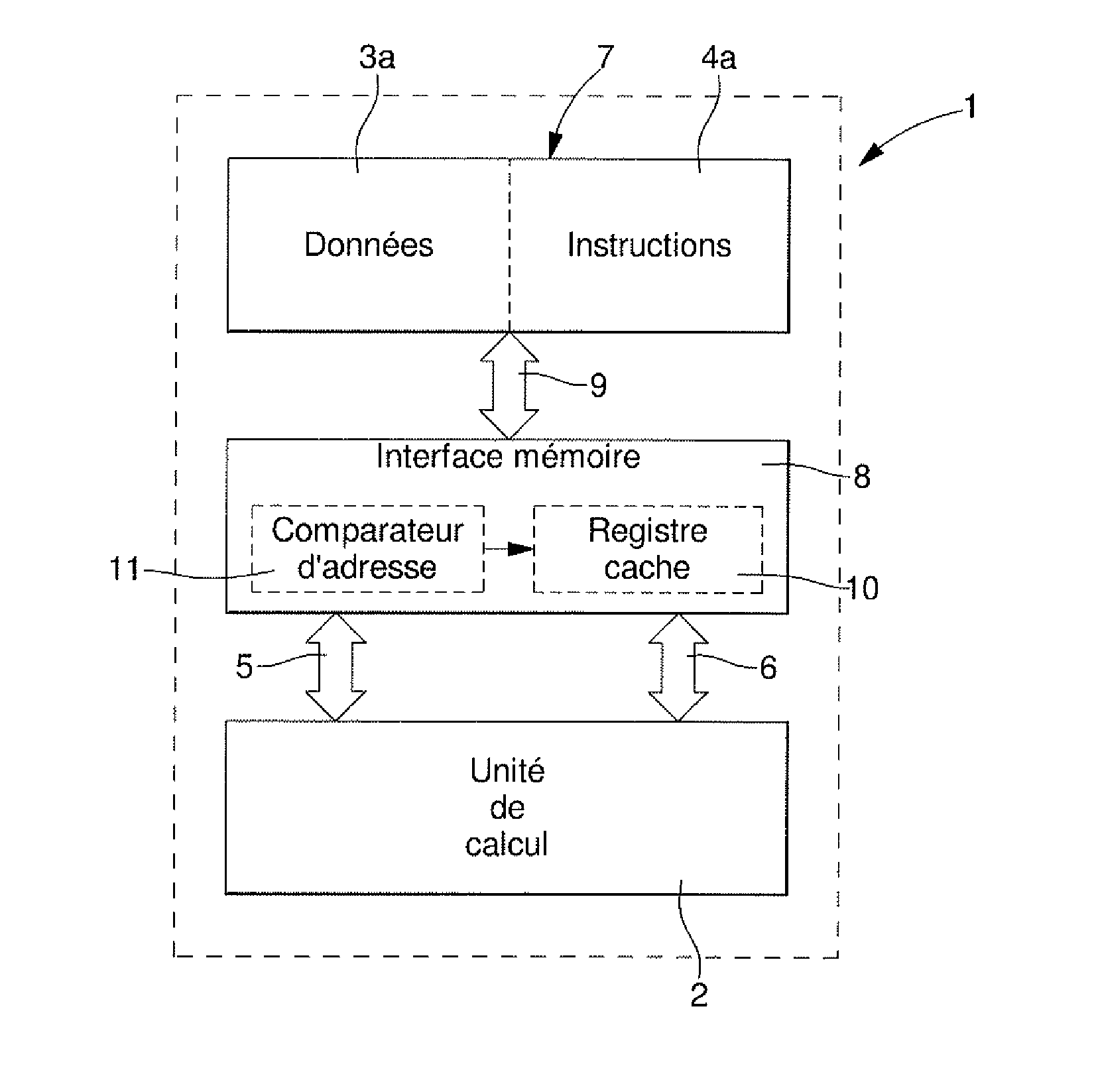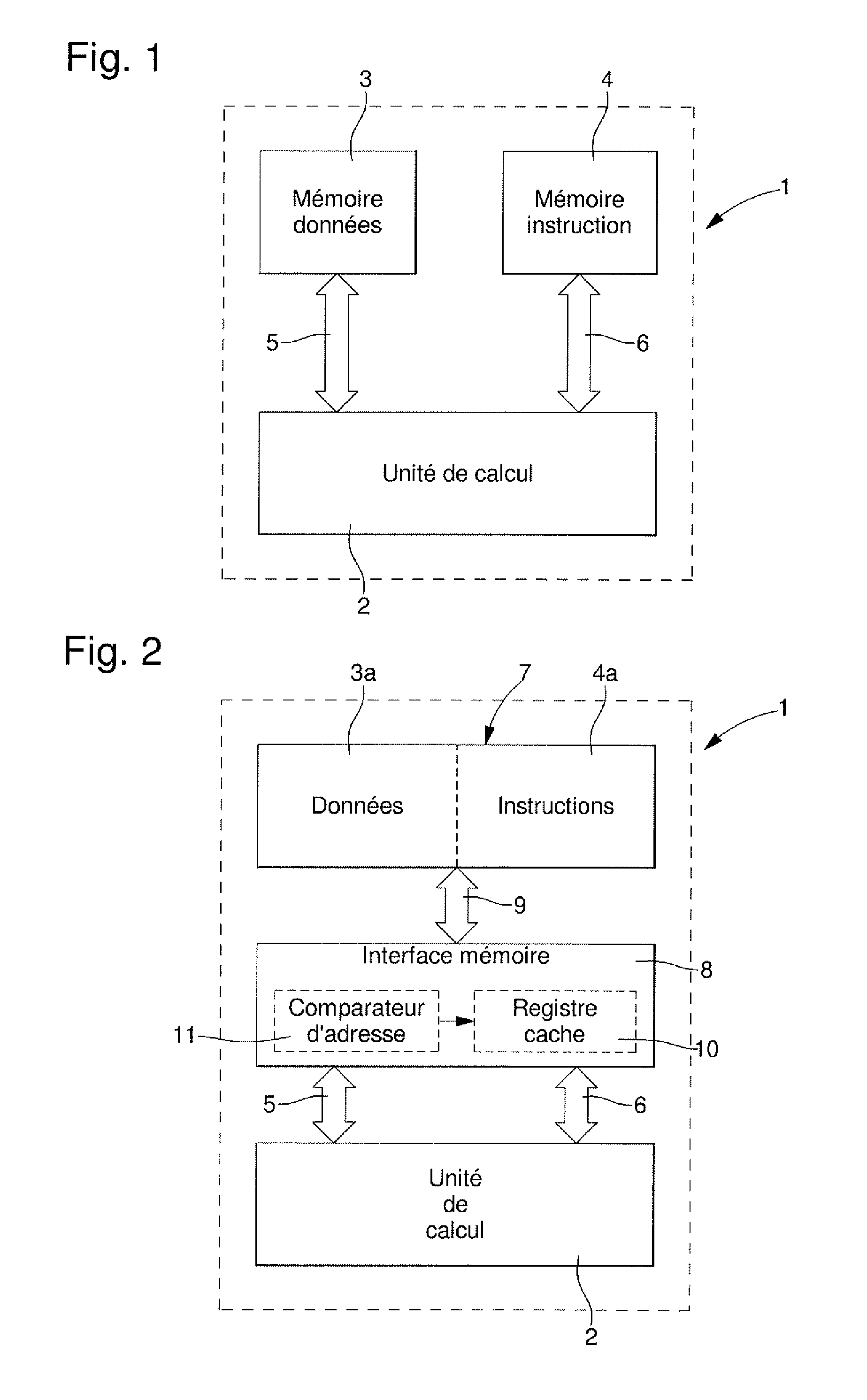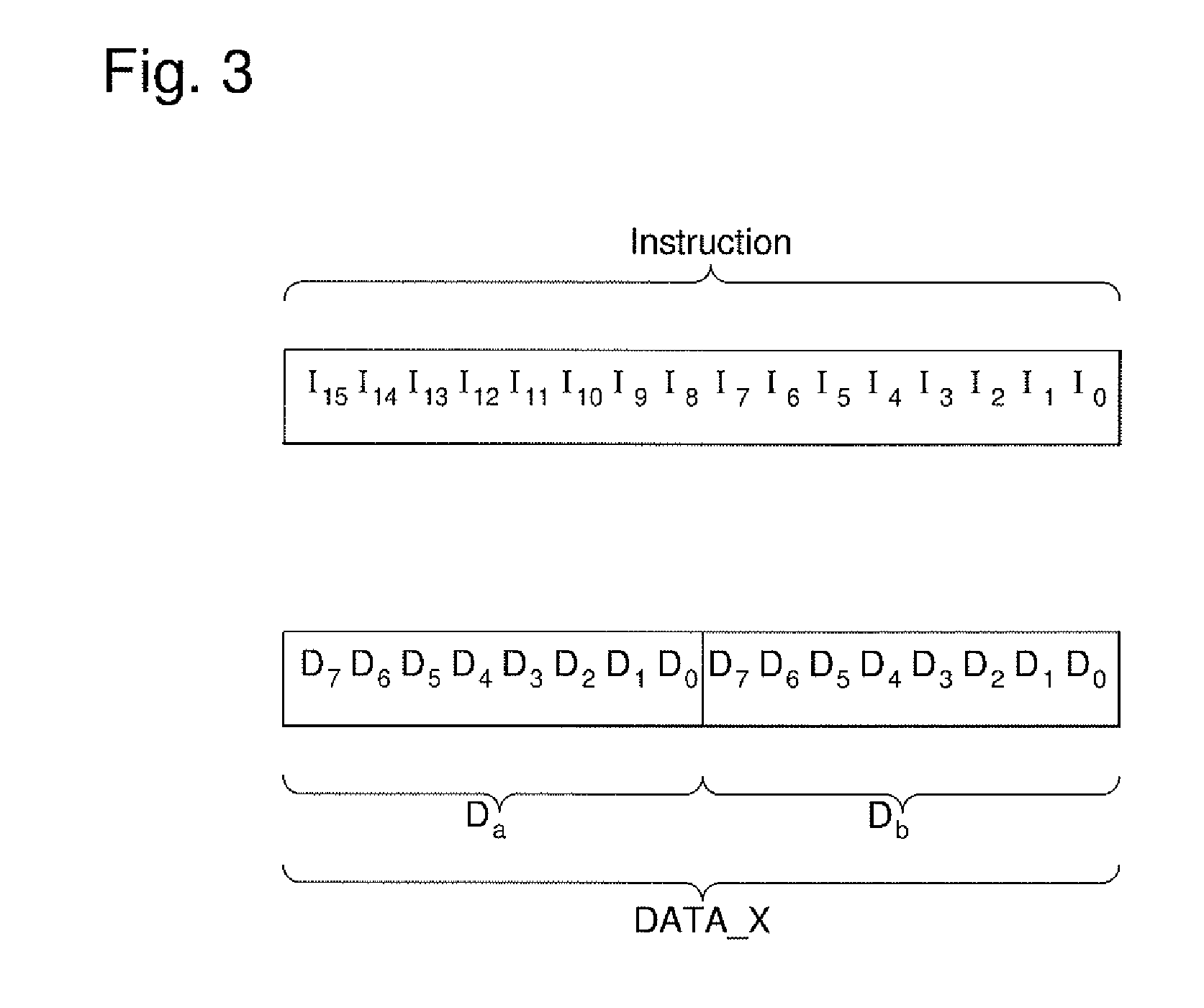Processor circuit with shared memory and buffer system
a technology of processor circuit and buffer system, which is applied in the direction of electric digital data processing, instruments, sustainable buildings, etc., can solve the problems of inflexible use of architecture with two separate memory units, increased cost of alteration, and time-consuming and laborious alteration, so as to save space, save time when successive data is read, and reduce the surface area
- Summary
- Abstract
- Description
- Claims
- Application Information
AI Technical Summary
Benefits of technology
Problems solved by technology
Method used
Image
Examples
Embodiment Construction
[0018]In the following description, all those parts of the processor circuit which are well known to those skilled in the art in this technical field are only explained in a simplified manner.
[0019]FIG. 2 shows schematically a processor circuit 1 having a Harvard architecture in accordance with this invention. This processor circuit 1 thus includes a calculation unit 2 and two memory elements 3a and 4a; one 3a containing data and the other, 4a, instructions. Calculation unit 2, also called an arithmetic and logic unit, is used for carrying out the basic operations, said unit 2 being the core of said processor unit. Calculation unit 2 communicates with memory elements 3a, 4a via respective communication buses 5, 6. These communication buses 5, 6 respectively connect said calculation unit 2 to memory element 3a containing data, and said calculation unit 2 to memory element 4a containing instructions and are respectively called the data bus 5 and programme bus 6. Communication means 5,...
PUM
 Login to View More
Login to View More Abstract
Description
Claims
Application Information
 Login to View More
Login to View More - R&D
- Intellectual Property
- Life Sciences
- Materials
- Tech Scout
- Unparalleled Data Quality
- Higher Quality Content
- 60% Fewer Hallucinations
Browse by: Latest US Patents, China's latest patents, Technical Efficacy Thesaurus, Application Domain, Technology Topic, Popular Technical Reports.
© 2025 PatSnap. All rights reserved.Legal|Privacy policy|Modern Slavery Act Transparency Statement|Sitemap|About US| Contact US: help@patsnap.com



